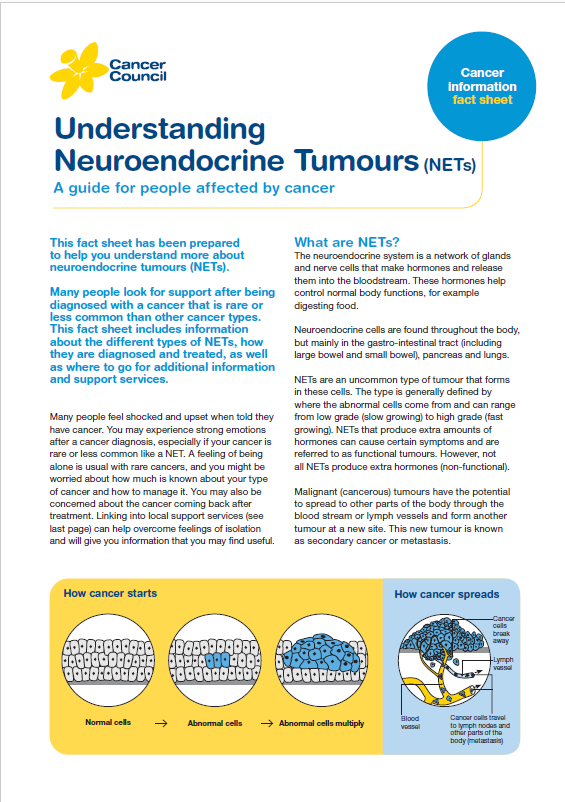Neuroendocrine tumours (NETs)
If you’re affected by a neuroendocrine tumour (NET), you may have many questions about how it is diagnosed, treatment options, side effects and how to stay well. You can find trustworthy information about all aspects of your experience below.

Download PDF
Print these questions
Diagnosis
- What type of NET do I have? Where is it located?
- How far has it spread? What stage of cancer do I have?
- What grade is my tumour/tumours?
- Have you treated this type of cancer before?
Treatment, side effects and follow-up care
- What are the treatment options for me? What do you recommend and why?
- What is the goal of treatment for my type of NET?
- What are the possible risks and side effects of my treatment? How will these be managed?
- What impact will treatment have on my fertility?
- How long will treatment take?
- Is this treatment covered by Medicare/private insurance? Will there be extra expenses?
- If the cancer comes back, how will I know?
If you are thinking of taking part in a clinical trial, here are some questions you could ask:
- What are the possible benefits and risks to me?
- What is being tested and why?
- How many people will be involved in this trial?
- If I cannot get onto a clinical trial can I still pay for a drug that is currently in trial?
Need to talk?
Call 13 11 20 to talk to a health professional Or email us your questions.